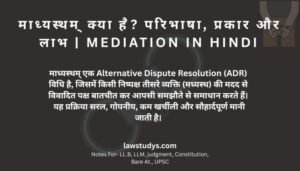Hello friends, what is Kautilyas Arthashastra in this article? What has been its contribution in the ancient judicial system of India and what was the nature of Indian judicial system and penal law in Kautilyas Arthashastra has been mentioned in the form of an essay –
Kautilyas Arthashastra –
The contribution of Kautilyas Arthashastra to the Indian judicial system is unprecedented. Since economy is related to the prosperity of human life, it has always been closely related to state administration and law and order.
Historically, Arthashastra was composed during the Dharmashastra period of ancient India. But the most important contribution in this field has been that of Chandragupta Maurya’s minister Kautilya (Chanakya).
In Kautilyas Arthashastra, detailed rules related to law have been given for good governance, political maneuvering and discipline system.
Kautilya, considering theology as the base pillar, considered the king as the fountain of justice and expected the ruler to protect his subjects with motherly feelings. Since ancient religion was based on duty, there was no place for discrimination on the basis of caste, religion, sect etc.
Also Read – Description of the Scope and Nature of Criminology
Character system –
The ‘Character system’ of ancient India was based on social cooperation and integration and not on the caste system which divides the society for selfish interests like in the present times.
The then Character system was based on the economic principle of division of labour. In ancient India, a definite law and judicial system was prevalent in which various crimes were clearly defined and explained and the qualifications and duties of penal officers were mentioned in detail.
Criminals were punished according to their crime. The rules regarding evidence, inheritance, rights etc. were definite and clear. The trial of the accused was conducted on the basis of available evidence. During the trial period he could take advice from any Brahmin or Pandit.
Western legal thinker Sir William Jones, who had a deep interest in Indian ‘theology’, German jurist Frederick Schlegel, French philosopher Victor Cousin and Professor Max Muller has described Vedanta philosophy as a wonderful coordination of religion, law and policy, as a result of which social integration and purity of law gets strengthened.
Also Read – What is the Schools of Criminology And how many Types are there? – Criminology
Penal law in Kautilyas Arthashastra –
Kautilyas Arthashastra – Ancient legal philosophy was not opposed to worldly and material happiness, but under it, every person was expected to use and consume property on an equal basis.
The parties had the facility to present their case through a ‘lawyer’, but for serious crimes like murder, Robbery, fraud, insult to modesty, perjury and destruction of judge’s property etc., the accused had to personally appear in the court and present his case. It was necessary to present the side.
The person found guilty of giving false evidence was to be given particularly severe punishment. A lawyer advocating on behalf of his party and a person engaged in Prayer, hobh, havan, sacrificial work, charity, religious war etc. could not be arrested.
Similarly, the law was especially lenient towards those classes like artisans, messengers and painters etc. who were engaged in house construction and it was considered necessary to keep them free from bondage.
There was a liberal policy towards the Brahmins present in the court as witnesses and it was not considered necessary to instruct them to speak the truth while giving evidence because there was no doubt about their good conduct.
Adept scholars or ascetics, lepers, slaves, blind persons, minors (persons below fifteen years of age) and persons above eighty years of age were generally not presented as witnesses. Once a serious crime was proven, the guilty person was not accepted as a witness in any other case.
Also Read – What is Criminology : Introduction, Definition, Importance
In the ancient Hindu judicial system, criminals were subjected to trial by fire to prove them guilty or innocent. Fire or water was especially used in fire test. The criminal was forced to hold a hot iron rod in his hand or walk barefoot a few steps across the burning fire. If the criminal passed this test, he was considered innocent and was immediately freed.
But if he suffered any kind of injury or wound as a result of the fire test, he was considered guilty and this punishment was sufficient for him.
Similarly, in order to test the guilt or innocence of the accused, he is immersed in boiling water or thrown into a strong current and if he comes out alive safely, he is considered innocent, but if he becomes dead after boiling or in flowing water, In case of death by drowning, the person was considered guilty of a crime.
In ancient penal law, it was generally prevalent to punish criminals by beheading them. Thus, for some crimes, the forms of punishment like ostracizing a person guilty from the caste or society, cutting off one or both hands or legs of the criminal in serious crimes, etc. were horrific and harsh. This was the reason that the number of crimes was very less during that period.
Penal law regarding Jaarata –
Detailed provisions have been given in the scriptures for crimes related to caste. Having sexual intercourse with another woman, living alone with her, assuming the tacit consent of a woman and taking her to solitude with bad intentions etc. were serious types of Jaarata for which both men and women were given equal fines.
The private parts of the person convicted of rape were cut off and his property was confiscated in whole or in part. Sometimes the person guilty of this crime was also punished by burning to death.
From the above discussion, it can be inferred that the judicial system (punishment system) of ancient India was less harsh than the later Muslim or English penal system.
The charge often leveled against the Hindu penal system is that under it, special leniency was shown towards a specific section of the society, the Brahmins, which was not justified from the judicial point of view. But at that time the standard of conduct of the Brahmins was ideal and there was no doubt about their purity or virtuousness.
Also Read – What is Women Crime : Definition, Causes And Preventive Measures
The society looked at him with respect and he had the best position in the then society. It is noteworthy that there was special leniency towards religious protectors not only in the Indian legal system, but in other ancient countries also, religious leaders had such privileges.
For example, in ancient English law the system of ‘Benefit of Clergy’ was prevalent for many years. Similarly, in Muslim penal law, there was a provision of lenient punishment for clerics.
It is mentioned in Manusmiti that in the Hindu period, there were separate courts to settle civil and criminal cases, whose decisions could be appealed to the court of the ruler located in the capital. Many cases were settled through arbitration of arbitrators, in which the minimum number of arbitrators was often five.
Praising the Vedic judicial system of ancient India, the well-known commentator of Hindu law, Sir Mayne, has said that although the source of the present Indian law and judicial system is considered to be the judicial system introduced in this country by the British rule.
Nevertheless, a well-organized and well-established legal system existed under the ancient Hindu jurisprudence, the partial influence of which is also visible in the present Indian legal system.
In the context of ancient Indian legal philosophy, Francis Mac Naughten has written that, the legal science of ancient India is as old as humanity, its originator is none other than God, the creator of the world. It is based on the ancient Sanatan Dharma which has been followed in India for centuries.
Since eternal religion contains the soul and essence of all religions, it will never end. In the Vedic period, since law was considered a form of religion, there was no difference between the two and they were integral parts of the same system.
The word ‘Sanatan’ means such good conduct which is very ancient and indestructible, that is why it is considered to never end.
It was necessary for different components of the society to follow their religion – like, Rajdharma for the ruler, Grihastha Dharma for the worldly person, ‘Naridharma’ for women, Gurudharma, Patidharma, Manavdharma etc.
According to Dr. Kane, with time, changes took place in the ancient Sanatan Dharma and in the present time it is seen as a duty and responsibility of human beings towards the society. (Kautilya’s Arthashastra)
Related Post –
What is Charter of 1726 : Main Provisions | Features and Demerits – Legal History




